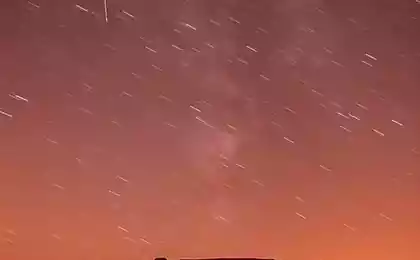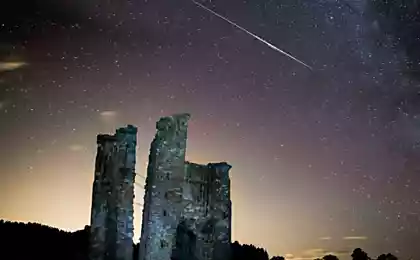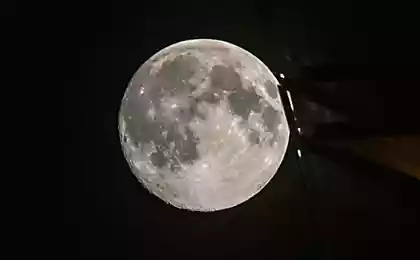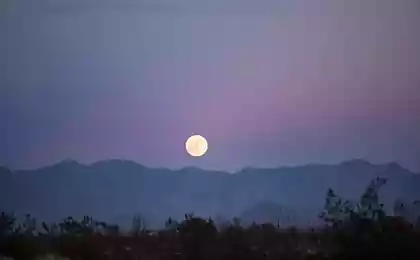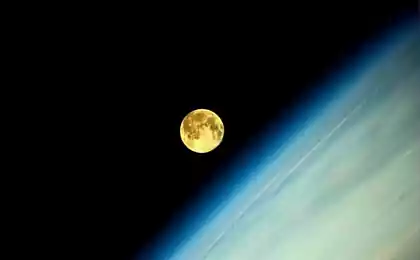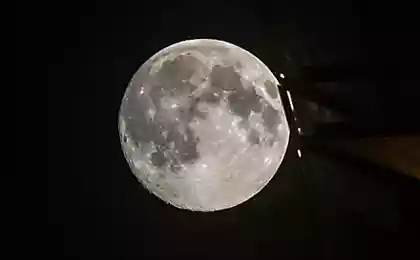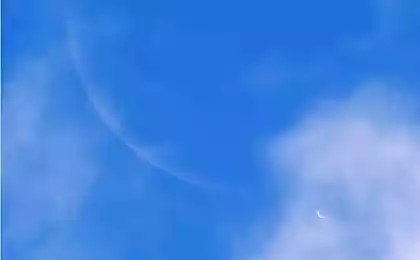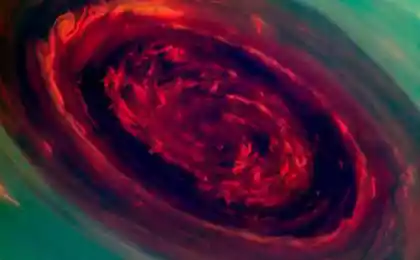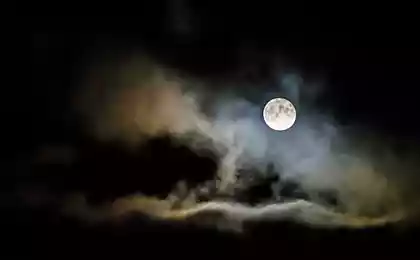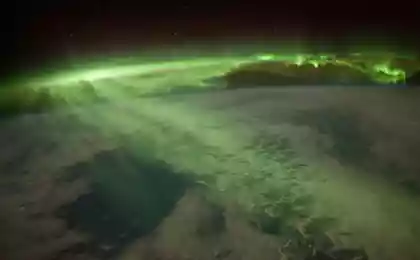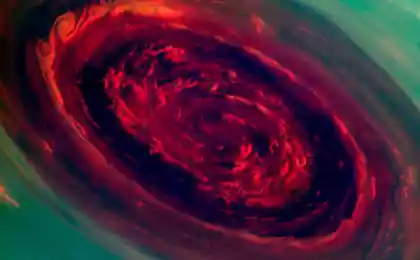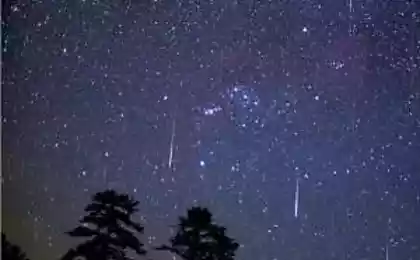August - a very popular month for astronomical observation - the sky gradually becomes darker, the nights lengthened, but has not yet come into its own cloudy and rainy autumn, the temperature is still comfortable to stay under the open sky. What astronomical events await us in the second half of the year?
Supermoon h4> Will: evening of August 10
"Supermoon" occurs when the full moon falls on the moon's orbit periapsis, ie The moon is closest to Earth. Perigee Moon - 357,000 km, apogee - 406 000. "Supermoon" 14% bigger and 30% brighter than an apogee. Regarding the "average" size of the moon more than 8%, brightness - 13%.
The value of the so-called enhanced Moon иллюзией Moon , because of what low moon seems even more. So I recommend not to miss today's match. Supermoon occur at intervals of 13 months, the next will be in September 2015.
There is an excellent video showing the position and other parameters of the Moon in 2014:
Perseids h4> Will: July 17 - August 24 August 12
Perseids - one of the most famous meteor showers. Best time appearance in the late summer and high activity at sixty per hour made it very popular. The flow usually lasts from the second half of July until the second half of August. In 2014 - from 17 July to 24 August. Maximum usually falls on August 12-13. Next meteor forms a line if you continue these lines, they intersect in the constellation Perseus. There is the so-called radiant (conventional point-source) meteor shower. In radiant meteor showers get their name.
In reality, the radiant - a perspective effect. The real source of the meteors - the comet's orbit Свифта-Тутля, which crosses the Earth every year. Comet flew the last time in 1992, it is expected to return in 2126, and it will pass close enough to Earth (23 million km, about 60 orbits of the moon). In 1993 Perseids were exceptionally abundant recorded from 200 to 500 per hour. In a "normal" year the Perseids at maximum activity show about 60 meteors per hour.
Perseid activity has already begun, that the schedule according to observers. The picture from the site International Meteor Organization , so it should be updated over time:
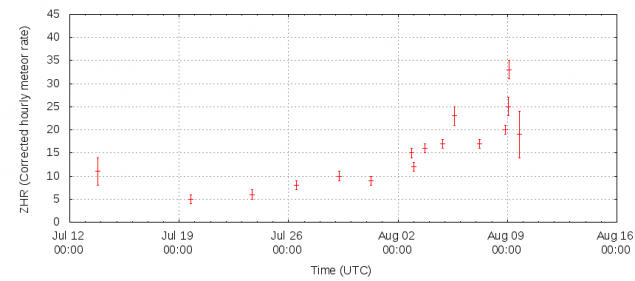
This weekend, the full moon with its light interfere with observations. Maximum activity occurs on August 12th, is the environment. Therefore it is necessary to reflect on the observations on the following weekend - August 16-17. On Wednesday, you can watch and try out at home, taking an amendment that the illumination of the city and nearly full Moon will lead to what will be visible only to a very bright meteors. A word of advice - to observe meteors better not look at the radiant, and at 60 ° to the left or right. In this case, a better chance to observe meteors.
If you saw something, a small educational program is useful for the correct name:
Meteoroid - is something that flies in space and enters the atmosphere.
Meteor - is a trace of the meteoroid in the atmosphere.
The car - it is a very bright meteor (brighter than Venus).
Meteorite - is a meteoroid, or pieces that have fallen to Earth.
Well, if you too lazy or the weather turned bad, you can watch the video:
Connection Venus and Jupiter h4> Will: the morning of August 18
Mix in astronomy - a visual convergence of two celestial bodies. If more than two bodies, we often use the term "parade of planets." Jupiter and Venus - a very bright objects, and their connection is to be beautiful enough. The planets are very close to each other - at the time of closest approach between the two will be only 0, 2 °. Look at the time of sunrise, where you are (weather websites usually write about it, or use planetarium program), Venus and Jupiter will be visible in the east just before sunrise:
The convergence of Mars and Saturn h4> Will: evening of August 27
Less spectacular because of the greater distance (4, 5 °), but still quite interesting. Saturn and Mars are less bright than Venus and Jupiter will be quite low in the sky, it will complicate monitoring.
Comet h4> bright comets in the near future is expected. But one comet is currently available for observations with a telescope on a dark sky - C / 2014 E2 Jacques. It does not come close to the Sun - periapsis of its orbit slightly closer to the orbit of Venus, and not very bright. But if you go out of town with the telescope, think about how to look at it. In August and September it will move on the north-eastern part of the sky - the constellation Perseus, Cassiopeia, Cygnus.
The exact position of the comet and its search for a card can be found at Heavens Above .
Planet h4> Jupiter will be visible in the morning sky, gradually rising higher along with the constellation of Cancer.
Venus will be visible in the late summer and early autumn in the morning, and will no longer be visible in the second half of September, to reappear already December evening.
Saturn will be visible in the evenings until October and will again have December morning.
Mars is moving away from us and will be seen as a gradual weakening star in the evening sky.
Star clusters and nebulae h4>
Andromeda h5> August and September - the perfect time to observe the Andromeda Nebula. The farther away from the city and the darker the sky, the more you can see. In the middle of the night, it will be almost at the zenith. The higher the object is, the less will interfere with the atmosphere. You can find it on the constellations of Andromeda and Cassiopeia:
Visually, it is, of course, be seen as themselves:
But with the help of photographic equipment and labor can obtain real masterpieces (photo Syktyvkar astrokluba ):
Pleiades h5> The Pleiades - a cluster of stars visible to the naked eye. In August, they are visible in the east in the morning and every day will rise higher.
Visually, they look like a few points (or vague speck in poor due haze or glare conditions). I come across people who are in the Pleiades seen UFOs flying formation, so that even the least Astronomical Literacy - a useful thing. In fact, it is located next to the star at a distance of 440 light years from Earth. Photographic shows that they clearly blue, and there are some stars of the nebula (Photo by Lisin site astrnonmy.ru ):
Nursery h5> This year, thanks to Jupiter will be easy to find open cluster Manger. To the naked eye in a dark sky, it will be seen as a hazy spot:
But in the sight of the telescope it becomes much more beautiful (photo user Fomalhaut site astronomy.ru < / a>):



